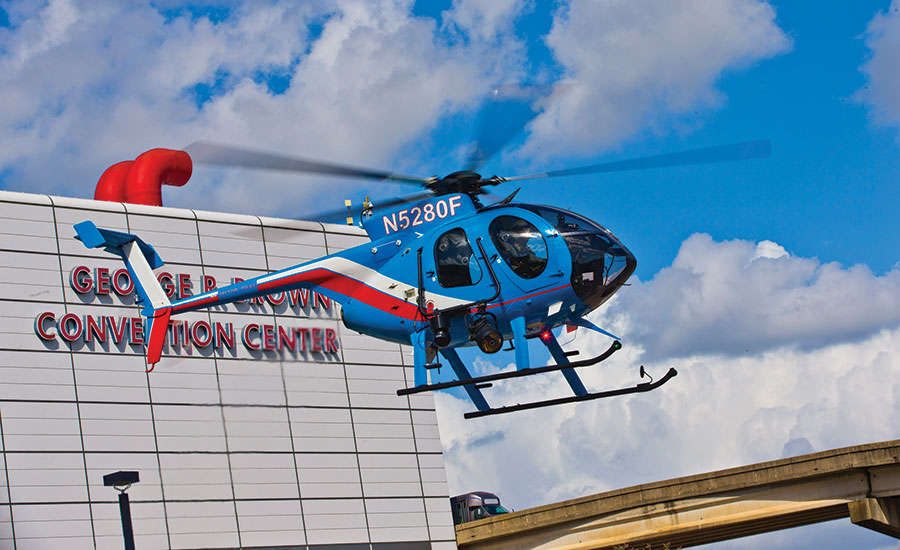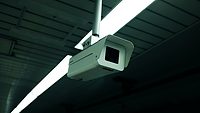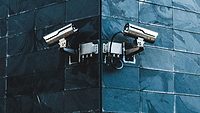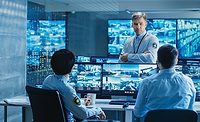In late February 2017, Oklahoma City Police Officers responded to a call of alleged illegal activity, where, soon after their arrival a foot chase pursuit began of a suspect who fled the scene. The suspect pulled out a gun while running. The officers clearly instructed him to drop the weapon. When he refused one of the officers shot him, non-lethally. He was then arrested, taken to the hospital and then sent to jail.
The entire incident, however, was filmed using officers’ body cameras and was subsequently released to a news outlet, posted online, only eight days after the shooting.
Body cameras are part of a growing mix of alternative surveillance devices and technology that builds on a growing network of stationary surveillance cameras. Such alternatives include audio surveillance, chemical surveillance and even heat and thermal sensing technology.
There are also numerous wearable gadgets, with multiple surveillance and emergency response devices, that may be placed on purses or worn by cyclists, drivers, industrial workers and others to send out alarms should a violation occur.
Such alternate surveillance technologies are emerging as tools for added transparency. In fact, such new and emergent surveillance technologies are redefining the meaning of transparency in the context of security nowadays. This is only the beginning.
Growing Popularity
“Both body cameras and audio surveillance are areas that are seeing rising interest,” says Kathryn Brink, an industry analyst with the Freedonia Group. “Body cameras are already being used throughout a growing number of law enforcement agencies and have also seen some use among guard companies. Audio surveillance, on the other hand, has seen much more limited use.”
She notes that despite recent debate about body camera use by law enforcement, they are very effective surveillance tools and are gaining momentum by other entities and in combination with other technology.
“This is particularly true in law enforcement agencies, but these best practices are important for guarding companies and other end users to establish as well,” she says. “Enterprise security executives need to know when they are expected to turn the cameras on or off and how they need to document any recorded incidents. After all, a body camera is only effective if the user turns it on at the proper times, and it is logistically impractical to leave them on at all times due to privacy concerns and the large amount of data that must be stored. In addition, it’s important to remember that body cameras are best utilized when used as part of a larger surveillance system in order to provide a well-rounded assessment of a situation.”
Brink says that concerns with audio surveillance largely come down to the legality of its use. Undoubtedly, there is much uncertainty and misunderstanding regarding when it is, or is not, appropriate to utilize audio surveillance. “Because of this, it seems that many end users have shied away from audio altogether,” says Brink. “Nonetheless, audio capability is relatively easy to incorporate into existing video surveillance systems and utilizes far less bandwidth than video does. It can be a helpful addition to surveillance systems and provide additional opportunities for analytic capabilities when used correctly.”
But the benefit of alternate surveillance methods and tactics provide many flexible options for security professionals who have different needs at different times to implement a means of gathering intelligence data and information.
Enterprise security executives can be proactive in using surveillance by being sensible about the use of many different types of surveillance technologies – both wearable and otherwise. They can use such technologies in a way that won’t conflict with the operational tempo of the communities and enterprises that they serve.
“Be open and transparent about new technology and seek input from those impacted as to how best deploy it and ensure robust compliance and audit and review functions,” says Danny Linskey, former Superintendent-in-Chief of the Boston Police Department and now managing director of the Law Enforcement and Public Safety Consulting practice at Kroll Associates in Boston, MA. “Engaging stakeholders as new technologies are being considered and evaluated before any decision is made can go a long way in addressing concerns that may arise. Educate individuals on what the technology is and how it will be used before the rumor mill shapes the narrative.”
Moreover, the technology needs to be able to fit with other technology with which it interacts. Thus, an open architecture is important.
And there’s also more to the equation than just the technology. It’s the interpretation of the data it affords.
“From my experience the recent traction gained in the surveillance industry is not a result of new hardware or collection methods but more how surveillance is being interpreted and turned into actionable intelligence,” says Steven Muntean, a security consultant in Atlanta.
Muntean points out that there are an estimated 30 million surveillance cameras deployed in the United States shooting roughly four billion hours of footage per week. “With new technologies the data gathered from surveillance cameras across the country can be pulled remotely and monitored live to prevent crimes before the happen,” he says. “This real-time remote monitoring is using pre-existing surveillance cameras and integrating new technologies to interpret threats and disseminate actionable information to appropriate security stakeholders.”
Alternative Surveillance Technologies Come in Many Forms, Shapes and Sizes
We asked Danny Linskey, former Superintendent-in-Chief of the Boston Police Department – a 27-year veteran of the force – and now managing director of the Law Enforcement and Public Safety Consulting practice at Kroll Associates in Boston, MA., to summarize prevailing technologies used for surveillance. Here’s what he outlined:
-
Sophisticated surveillance cameras – they’ve been around for awhile, but they are everywhere now, constantly monitoring us and the world we live in. Security professionals are overwhelmed with managing the amount of video they receive, and depend on video analytics to identify emerging concerns, immediately causing an alert to those tasked with monitoring video feeds. In addition to the proverbial and ubiquitous stationary cameras, and of course, wearable body cameras, other cameras can be mobilized in other ways. For example, they may deployed on drones quickly to show live feeds of evolving situations as well as utilizing thermal imaging to locate individuals in pitch darkness.
-
Facial recognition or digital review – this allow subjects or items to be followed across a wide array of video systems with a person’s path of movement tracked instantly.
-
Digital analytics – such technology can now show items such as a backpack that is left on the ground unattended for a set period of time and send an alert. Some software has been developed that can accurately identify the presence of a firearm as soon as it enters into the field of view of a video camera.
-
Sound and audio surveillance – for example, acoustic gunshot detection systems that can identify gunshots and the exact location in seconds from which they were fired. These systems can then have any cameras in the area that are connected to the system turn and focus on the location of the event. In military deployments, these systems can not only identify the location of the threat, but they can also engage a weapon system that will immediately return fire on its own.
-
Handheld thermal image devices – such devices are being used by law enforcement to locate individuals and evidence. Previously, a foot chase would often have subjects tossing evidence, including evidence into darkened overgrown areas. Officers would have to use flashlights and hope they could find the needle in a haystack. Now, officers scan the path of flight with a thermal imager and can right away see items recently discarded that are maintaining the body heat they were absorbing before they were tossed, compared to the colder environment around them.
-
Chemical, Biological and Nuclear monitoring technology – can detect dangerous products by deploying a monitor in the trunk of a cruiser and driving on a highway or with a beeper-sized item on a belt. Some of these monitors are capable of identifying the smallest amounts, such as those used in medicine, as a police cruiser drives at 55 miles down a turnpike. In addition, vapor detection canines can be deployed at chokepoints to identify individuals carrying weapons or chemicals.
View From The Top with Houston PD Helicopter
The city of Houston, Texas recently provided the Houston Police Department, Houston Fire Department along with their EMS and first responders, with real-time HD surveillance video from aircraft in order to supplement its tactical and strategic command.
The police had recently added seven new MD500 helicopters to their fleet, which consists of 11 MD500s and a Cessna 182 fixed wing aircraft. The city wanted to equip both the existing and newly acquired police airborne units with a video transmission solution, with the goal of delivering an additional layer of safety and security to law enforcement and emergency communications operations.
Using an Aerial Video Downlink System, first responders throughout Houston were able to benefit from an integrated suite of downlink transmitters, receivers and antennas to capture real-time, reliable high-definition video from drones, helicopters and other aircraft for display at command centers and on video management systems.
“Air support transmits video at all times during our flights,” says Mark Foster, a senior police officer with the Houston Police Department. “Once all equipment is up and running, the transmitter is turned on, so essentially all the flight can be seen by personnel that might be monitoring the downlink,” Foster says.
Video transmitted by these aerial platforms gives those on the ground a clear and reliable picture of what is being captured from above – which would allow Houston Police Department helicopter units to see everything and direct ground units with actionable intelligence in real-time.








